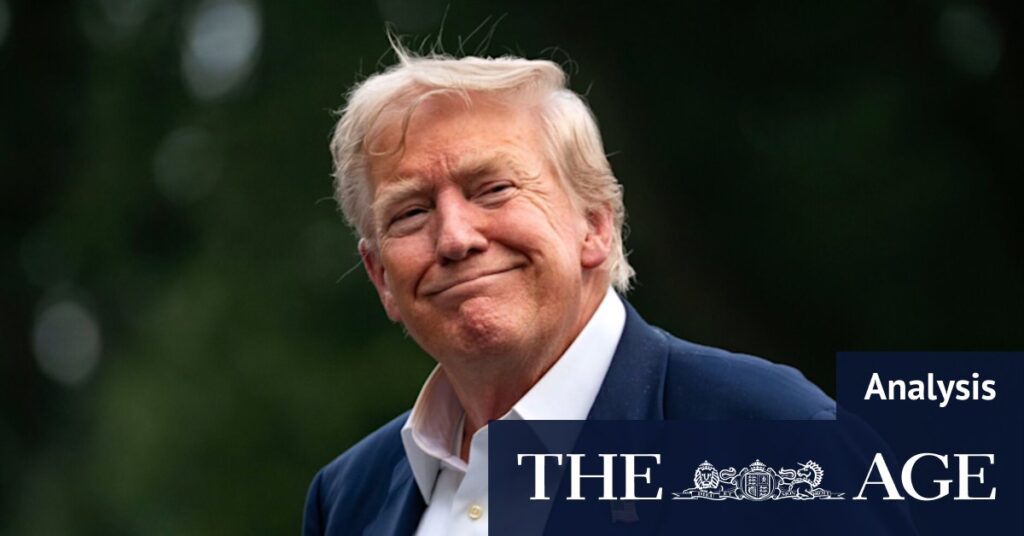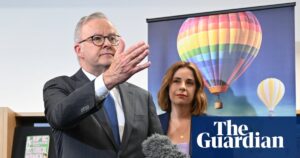
The United States economy has delivered a surprising performance in the latest quarter, with GDP growth reaching 3% and employment numbers remaining robust. This comes amid ongoing debates over the impact of President Donald Trump’s economic policies, particularly his use of tariffs. While fears of a recession have not entirely dissipated, the latest figures suggest a more resilient economic landscape than previously anticipated.
Earlier this year, financial giant JPMorgan had pegged the likelihood of a recession in the US at 60%. However, following President Trump’s decision to pause most tariffs, the bank revised this probability down to 40%. Despite the positive GDP headline, the underlying economic story is complex, with Trump’s tariffs playing a pivotal role. As businesses and consumers rushed to import goods ahead of potential tariffs, imports surged, negatively impacting GDP calculations and resulting in a 0.5% contraction in the early months of the year.
Economic Dynamics and Tariff Impacts
The recent quarter saw a decline in imports, allowing GDP to rebound to 3%, a figure reminiscent of the strong growth observed during the middle of last year under former President Joe Biden. Contrary to Trump’s assertions, he did not inherit an economic crisis but rather a rapidly growing economy post-COVID-19.
Federal Reserve Chairman Jerome Powell emphasized the importance of examining combined growth figures for the first half of the year to account for volatility. The data showed a GDP rise of 1.2%, a decrease from the previous year’s average of 2.5%. Powell attributed this moderation to a slowdown in consumer spending, although business investment in equipment and intangibles showed an upward trend, while the housing sector remained weak.
“The moderation in growth largely reflects a slowdown in consumer spending,” Powell stated, adding that inflation remains “somewhat elevated.”
Consumer Spending and Economic Sentiment
Consumer spending increased by 1.4% for the quarter, up from 0.5%, despite the introduction of new tariffs generating significant tax revenue. The University of Michigan’s consumer sentiment survey reflected a recovery, with scores rising into the 60s from just above 50 points. However, a recent employment report revealed only 73,000 jobs were added in July, with previous months’ figures significantly revised down.
Economists remain divided on the long-term impact of Trump’s tariffs. Maurice Obstfeld from the Peterson Institute for International Economics suggests patience, stating, “These behavioral shifts have made GDP data more volatile than usual. Let’s wait for the tariffs to settle down at new, predictable levels and see what happens before we shoot the economists.”
“We’re going to look back and either say, ‘Wow, the economy was super resilient’… or we’re going to say, ‘Yeah, you could kind of feel it was weakening,'” said Louise Sheiner from the Brookings Institution.
Future Economic Outlook
Despite the mixed signals, the US economy appears more robust than initially feared. Justin Wolfers, an economics professor at the University of Michigan, remains cautious, noting a “decent chance” of economic downturn later this year. He highlighted the unpredictability of Trump’s economic strategies, coining the term TACO, or Trump Always Chickens Out, to describe the administration’s tendency to make bold announcements before retreating.
“The idea that a single quarterly reading on a single measure says anything about [the economy being a] miracle or mirage is silly on its face,” Wolfers remarked.
Meanwhile, within the Federal Reserve, there is a growing debate over interest rate policy. Despite Trump’s calls for rate cuts, the majority of the board opted to maintain rates at 4.25 to 4.5%. However, dissent emerged from two Trump-appointed governors, Christopher Waller and Michelle Bowman, who voted for a 0.25-point cut, suggesting a potential shift in monetary policy direction.
Waller argued that tariffs caused only a one-off price increase and that the bank should “look through” these effects, advocating for a more neutral monetary policy stance.
As the US navigates these economic complexities, the coming months will be crucial in determining whether the current resilience can be sustained or if underlying vulnerabilities will surface. The ongoing debate over tariffs and interest rates will likely continue to shape the economic narrative, with significant implications for both domestic and global markets.






